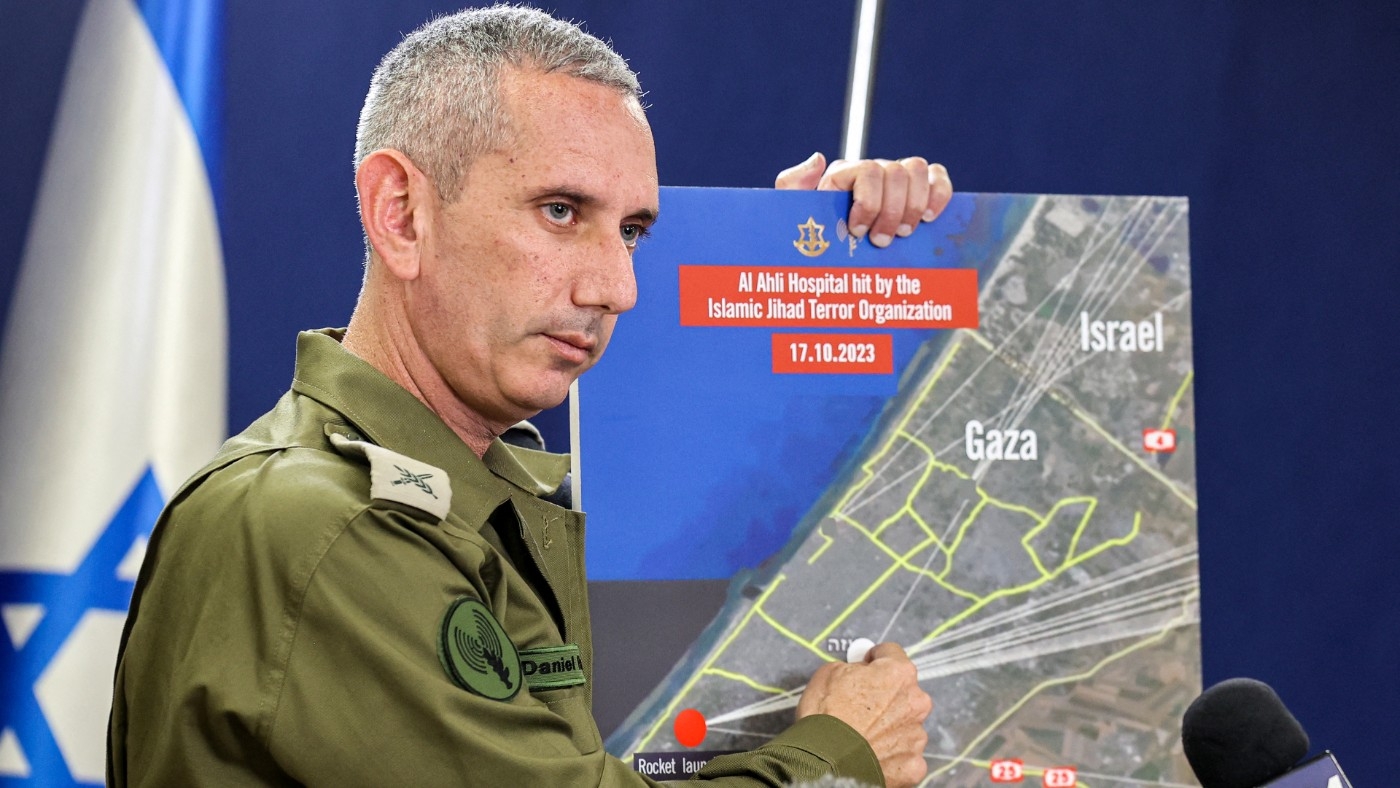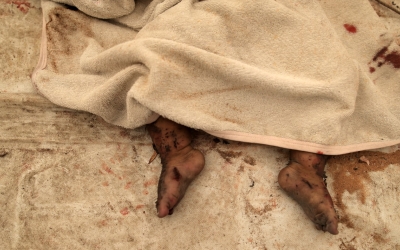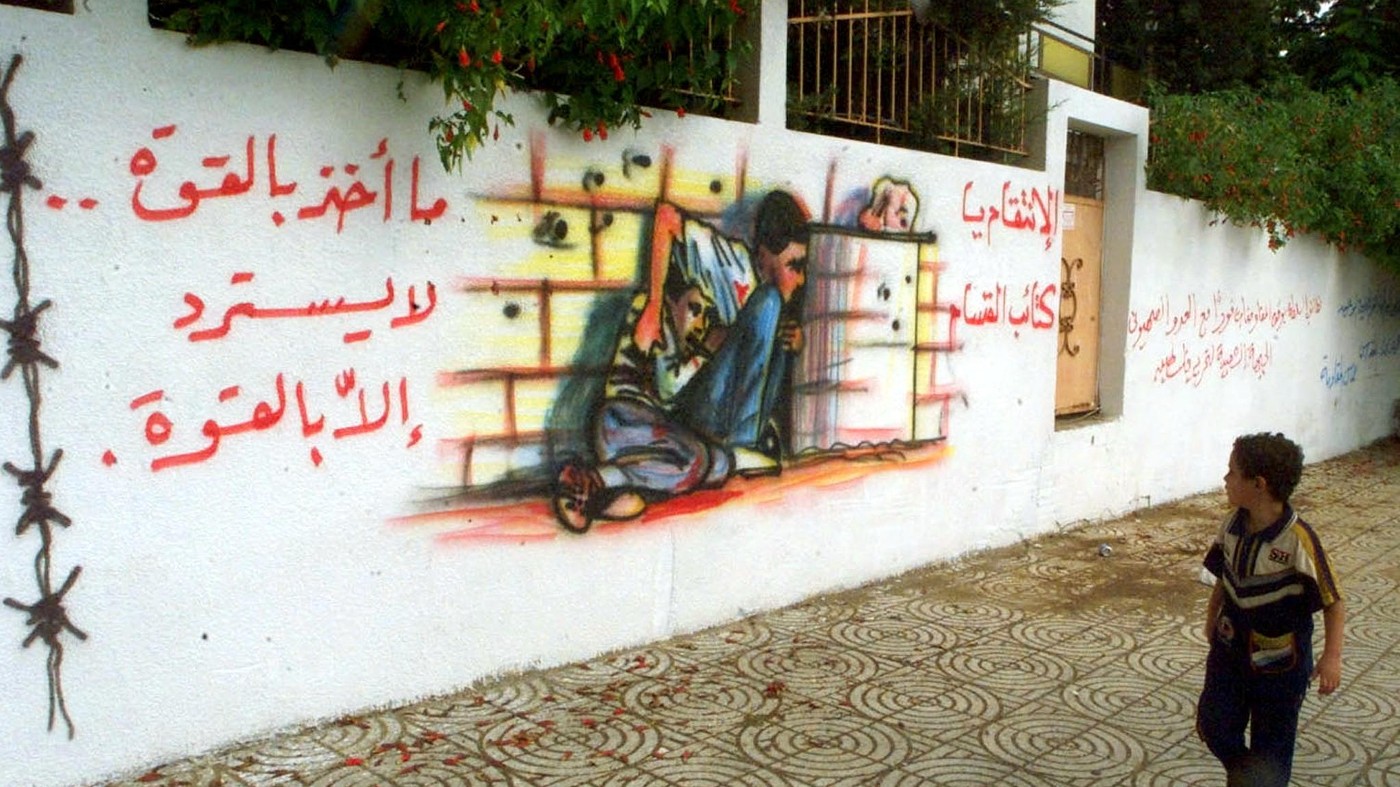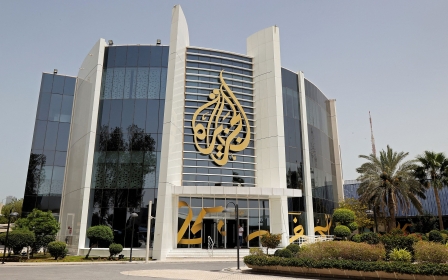Israel-Palestine war: Why are Israel's claims treated with such scepticism?

On Tuesday night, close to 500 Palestinians were killed at al-Ahli Arab hospital in Gaza City.
In the aftermath of the destruction, a blame game has begun. The Palestinian Ministry of Health said the hospital had been targeted by an Israeli air strike.
Hananya Naftali, a digital aide to Israeli Prime Minister Benjamin Netanyahu, tweeted initially that the "Israeli Air Force struck a Hamas terrorist base inside a hospital in Gaza. A multiple number of terrorists are dead."
Naftali then changed his story, calling the explosion "mysterious" and saying it was "either a failed rocket" or "something that was done on purpose in order to get international support".
When Israel responded officially, it denied responsibility for the attack and attempted to pin the blame on a misfired rocket launched by the Palestinian Islamic Jihad (PIJ) group.
New MEE newsletter: Jerusalem Dispatch
Sign up to get the latest insights and analysis on Israel-Palestine, alongside Turkey Unpacked and other MEE newsletters
The ramifications of the destruction have already been widespread, with demonstrators setting fire to the Israeli embassy in Jordan, while others have swamped the Palestinian city of Ramallah calling for the resignation of Palestinian President Mahmoud Abbas.
The scepticism with which Israel's protestations of innocence have been met is a result of years of misinformation put out by the Israeli army in the wake of controversial attacks and killings.
At an Israeli army press conference held in the wake of the massacre, one journalist referred to the army's "less than perfect" record when it came to providing credible information, citing its false claims that Palestinian militants had killed Al Jazeera journalist Shireen Abu Akleh in 2022.
Follow Middle East Eye's live coverage
"In the past, we were fast to go to conclusions - this is why on this event, we took the time, took us more than five hours, we wanted to double-check everything," an army spokesperson said in response.
However, the initial Israeli response to the hospital attack has in many respects followed the pattern of previous incidents.
What happened?
The attack on the hospital is the worst atrocity to take place in Gaza since Israel began bombing the besieged coastal enclave in the wake of a Hamas-led attack on Israel on 7 October.
Photos and videos from Gaza City showed fire engulfing the facility's halls, shattered glass and body parts strewn across the hospital's grounds.
One doctor described "horrifying, surreal scenes", and told Middle East Eye the attack had brought Gaza's health system "to its knees".
At the time of the incident, the Anglican-run hospital was providing treatment and shelter to hundreds of Palestinians wounded and displaced by Israel's 11-day war on the besieged enclave.
Photos and videos obtained by Middle East Eye showed paramedics and residents rushing to tend to the wounded, with scores of children among the casualties.
Around them in the grass were blankets, school backpacks and other belongings.
What did Israel say happened?
The Palestinian Health Ministry said on its Telegram channel that the hospital had received threats from Israel to either clear out or be bombed, and was in fact hit with an air strike on Saturday that was meant to be a warning for staff and patients to leave.
Hamas on Wednesday also reiterated its belief that the attack was an Israeli air strike.
However, Israel has so far refused to take responsibility for the destruction of the hospital.
Instead, it said a rocket launched by PIJ had fallen on the hospital, something the armed group strongly denied, saying in a statement that it “does not use places of worship or public facilities, especially hospitals, as military centres or weapons stores."
'Let us not be naive with regards to the political and analytical biases of a large number of actors in current online OSINT communities'
- Francesco Sebregondi, architect and researcher
The "Israel" X account tweeted on Tuesday night what it said was evidence of PIJ culpability in the attack, saying that “from the analysis of the operational systems of the IDF, an enemy rocket barrage was carried out towards Israel, which passed through the vicinity of the hospital when it was hit”.
However, the original version of the post included a video of rockets fired from the vicinity of Gaza City.
The video was later deleted by the account, while analysts noted that the first public mentions of the bombing were at 7.20pm local time, whereas the video shared by Israel as evidence was time-stamped at between 7.59 and 8pm local time.
That same account shared audio on Wednesday from the Israeli army claiming to be a conversation between Hamas operatives, in which they discuss the destruction of the hospital and pin it on PIJ.
But Muhammad Shehada, a Gaza-based civil rights activist who has reported on Hamas for a decade, posted that the quote had been mistranslated from "they're saying" to "we're saying".
"He's describing a rumour, not evidence," Shehada wrote, before going on to list other reasons for believing the audio was part of a campaign of misinformation.
Alex Thomson, a correspondent for Channel 4 News, said "several experts" had told him the "audio tape of 'Hamas' operatives talking about the missile malfunction is a fake. They say the tone, syntax, accent and idiom are absurd."
"They shot it from the cemetary behind the hospital," one of them can be heard saying.
Francesco Sebregondi, an architect and researcher currently with the investigative NGO Index, told Middle East Eye that Israel was keen to provide material quickly for analysts to pin their conclusions on.
"By quickly providing a number of poorly substantiated 'evidence' in the form of, for example, drone footage of the site, the Israeli army may also be counting on the eagerness of some Open Source Intelligence (OSINT) actors to use any image/material/data to quickly publish new content, or 'analysis' and thereby more or less directly support its version of the events," he said.
A 'less than perfect' track record
A number of previous incidents have tarnished the Israeli army's reputation for misinformation.
Perhaps the most notorious example in recent years was the killing of Palestinian journalist Shireen Abu Akleh.
Abu Akleh, who was also a US citizen, was shot dead by Israeli forces on 11 May 2022 while covering an Israeli military operation in Jenin in the occupied West Bank. Her colleague Ali al-Samoudi was also shot and injured.
Israel first accused Palestinian gunmen of shooting her, but then concded there was a "high possibility that Abu Akleh was accidentally hit by IDF (Israeli army) gunfire that was fired toward suspects identified as armed Palestinian gunmen".
The Israeli military advocate general's office said it would not open an investigation into any soldiers involved in the incident as "there is no suspicion that a criminal offence was committed".
Another example was the death of 12-year old Muhammad al-Durrah in 2000, one of the pivotal events of the Second Intifada (2000-2005).
Footage of the boy cowering with his father in the middle of gunfire and then slumping down dead sparked international outrage and remains an iconic image of Israel's repression of Palestinians.
Although the Israelis initially accepted reponsibility for his death - and claimed he was being used as a human shield - they later retracted this in 2005.
Claims and counter-claims were thrown back and forth, with some claiming that France 2, which initially broadcast the footage, had staged the incident. The company issued a number of successful defamation lawsuits in response.
"There was a lot of talk about this video, claims that it was fake. But the people saying this didn’t even know the area," Talal Abu Rahma, the cameraman who shot the footage, told Al Jazeera in 2020.

"There were a lot of calls and investigations with me about how true the images were. I had one answer for them: the camera doesn’t lie."
Ultimately, there will continue to be a range of conflicting narratives around what happened at al-Ahli Arab hospital as well. At the moment, an on-the-ground investigation seems largely impossible and the array of footage and imagery released online will likely continue to be the main source of information.
"Let us not be naive with regards to the political and analytical biases of a large number of actors in current online OSINT communities," said Sebregondi.
"The very term OSINT comes from the worlds of military and intelligence. Such online communities comprise a large number of (former) militaries and intelligence personnel who, under the disguise of full independent reporting, may also be inclined to support Israel’s ongoing brutal military action in what is still framed, by mainstream media outlets, as a 'war on terror.'"
This article is available in French on Middle East Eye French edition.
Middle East Eye delivers independent and unrivalled coverage and analysis of the Middle East, North Africa and beyond. To learn more about republishing this content and the associated fees, please fill out this form. More about MEE can be found here.






